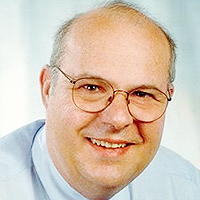Immunohistochemical expression of Nestin as Cancer Stem Cell Marker in gliomas
Published on: 11th November, 2019
OCLC Number/Unique Identifier: 8457474432
Background: Gliomas represent the most frequent primary tumors of central nervous system (CNS), contributing to more than half of the incidence of brain tumors. Cancer stem cell markers (CSC) identify a group of patients at high risk for progression. Nestin is an intermediate filament (IF) protein was first described as a neural stem cell/progenitor cell marker. Nestin-positive neuroepithelial stem cells are detected in the subventricular zone of the human adult brain and they remain mitotically active throughout adulthood. The expression of Nestin in gliomas has been suggested to be related to dedifferentiation, improved cell motility, invasive potential and increased malignancy. This study aims to investigate Nestin immunohistochemical expression in different types of glioma and its correlation with different clinicopathological parameters.
Materials and Methods: Nestin immunostaining was studied in 60 specimens of glioma using avidin-biotin peroxidase method.
Results: Nestin was strongly expressed in 11/60 (18.33%), moderately expressed in 29/60 (48.33%) and weekly expressed in 15/60 (25%) of studied gliomas. A significant positive correlation was found between Nestin expression and histologic type (p < 0.001) and increasing grade of gliomas (p < 0.001).
Conclusion: Increased Nestin expression is correlated with tumor progression, increasing grade and poor prognostic parameter of glioma. Nestin is a useful marker for detection of CSC in high-grade glioma which is responsible for resistance to chemo-radiotherapy and may serve as a predictor for patient outcomes.
Comparative Osteometric study of some selected bones of local domestic turkey and guinea fowl
Published on: 17th March, 2021
OCLC Number/Unique Identifier: 9038791097
The research was conducted in the Gross section of Veterinary Anatomy laboratory with the aim of preparation and comparing some skeleton bones of local domestic turkey and guinea fowl. Samples were purchased, sacrifice, feather and excess flesh were removed and boiled using water to produce the bones. The duration of process was recorded. Comparative biometry study was conducted on some selected bones (scapular, coracoid, furcular and tibiotarsus) and the bones were mounted using wooden stand, copper wire, and adhesive gum with the aim of enhancing avian teaching. Based on the processes of the research. It was recommended to use plastic materials in production of skeletal models to avoid deterioration of bones for proper teaching in veterinary anatomy.
Protection from the Pathogenesis of Neurodegenerative Disorders, including Alzheimer’s Disease, Amyotrophic Lateral Sclerosis, Huntington’s Disease, and Parkinson’s Diseases, through the Mitigation of Reactive Oxygen Species
Published on: 4th November, 2019
OCLC Number/Unique Identifier: 8302209826
The biological changes caused by oxidative stress (OS) are known to be involved in the etiology of neurodegenerative disorders, including Alzheimer’s disease, amyotrophic lateral sclerosis, Huntington’s disease, and Parkinson’s disease. The brain is particularly vulnerable to OS due to its high lipid content and extensive consumption of oxygen. OS processes, particularly the excessive production of reactive oxygen species (ROS), play a critical role in how neurodegenerative disorders develop. This is evidenced by in vivo studies investigating various biomolecules related to OS, such as products of lipid and DNA oxidation. Accordingly, ROS can also cause oxidative-related damage in neurodegenerative disorders, including dopamine auto-oxidation, mitochondrial dysfunction, glial cell activation, α-synuclein aggregation, excessive free iron, and changes in calcium signaling. Furthermore, excessive levels of cellular oxidants reduce antioxidant defenses, which in turn propagate the cycle of OS. As such, it is increasingly important to determine the linkage between a high intake of antioxidants through dietary interventions and a lower risk of developing neurodegenerative diseases. Indeed, in addition to modulating the immune system, optimal nutritional status is capable of changing various processes of neuroinflammation known to be involved in the pathogenesis of neurodegeneration. Accordingly, a better understanding of the role ROS plays in the etiology of neurodegeneration is needed, along with the identification of dietary interventions that may lead to improved therapeutic strategies for both the treatment and prevention of neurodegenerative disorders. Therefore, this review presents a comprehensive summary of the role of ROS in the pathogenesis of neurodegenerative disorders. In addition, nutrients believed to be useful for mitigating and counteracting ROS are discussed.
Tamsulosin and Dementia in old age: Is there any relationship?
Published on: 1st October, 2019
OCLC Number/Unique Identifier: 8280929913
Tamsulosin is used to treat Benign Prostatic Hyperplasia (BPH), prescribed annually to about 12.6 million patients worldwide. It is an alpha-adrenergic antagonist that reduces the tone of the prostate smooth muscle involved in the pathophysiology of BPH. By acting on alpha 1A receptors, predominant in the prostate, tamsulosin also acts on receptors present in the brain. This study consisted of a literature review aimed at disseminating scientific knowledge about the relationship between the use of tamsulosin and the onset of dementia. PubMed, Scopus, Scielo, Embase, and Web of Science studies involving dementia in patients using tamsulosin in the last five years were selected. The review showed a risk correlation and a higher incidence of dementia in treated patients. The risk ratio, when compared to other medicines, approached 1.20. In conclusion, it was identified the need for clinical trials with higher sampling power to increase relational significance due to the high prevalence of BPH and the extensive use of tamsulosin in elderly patients with the disease.
Pig raising practices by unprivileged, ethnic people in Bangladesh
Published on: 15th January, 2021
OCLC Number/Unique Identifier: 8899339111
We interviewed 207 pig raisers from seven different districts of Bangladesh to explore their practices related to their pig farming. We used structured questionnaires to interview the pig raisers and used descriptive statistics for analysis. Most of the pig raisers (54%) were illiterate. 50% (104) of them had a monthly income of less than 10000 BDT and 60% (124) were landless. Most of the pig raisers (92%, 191) were rearing local breed and 67% of them were practicing semi-scavenging system. As feed source 55% (114) pig owners used kitchen waste and 54% (111) used rice husk. The pig raisers mentioned different types of challenges such as social problem (16%), disease (50%), less profitable (20%) and unavailability of feed (19%). In our study, we found that 31% respondents visited veterinarians, 28% visited quack and 21% do not take any action when their pigs were sick. Only 16% pig raisers used vaccines against different infectious diseases and 36% used anthelmintics against parasitic diseases. Awareness buildup of the pig raisers may help them raising pigs in a better way which will improve the farming system and reduce the probability of disease transmission.
Carbonic Anhydrase I modifies SOD1-induced motor neuron toxicity in Drosophila via ER stress pathway
Published on: 1st August, 2019
OCLC Number/Unique Identifier: 8195612915
Background: Drosophila models of amyotrophic lateral sclerosis (ALS) have been widely used in understanding molecular mechanisms of ALS pathogenesis as well as discovering potential targets for therapeutic drugs. Mutations in the copper/zinc superoxide dismutase (SOD1) cause ALS by gain of toxic functions and induce toxicity in fly motor neurons.
Results: In this study, we have determined that human carbonic anhydrase I (CA1) can alleviate mutant SOD1-induced motor neuron toxicity in the transgenic fly model of ALS. Interestingly, we found that motor neuron expression of CA1 could independently induce locomotion defect as well as decreasing the survival rate. In addition, CA1-induced toxicity in motor neurons is anhydrase activity-dependent. Mechanistically, we identified that both SOD1- and CA1-induced toxicity involve the activation of eIF2α in the ER stress response pathway. Downstream activation of the JNK pathway has also been implicated in the induced toxicity.
Conclusion: Our results have confirmed that SOD1-induced toxicity in fly motor neuron also involves endoplasmic reticulum (ER) stress pathway. More importantly, we have discovered a new cellular role that CA1 plays by antagonizing mutant SOD1-induced toxicity in motor neurons involving the ER stress pathway. Such information can be potentially useful for further understanding disease mechanisms and developing therapeutic targets for ALS.
Characterization of Salmonella spp. isolated from small turtles and human in Republic of Korea
Published on: 11th December, 2020
OCLC Number/Unique Identifier: 8873196747
In 2013, the World Health Organization (WHO) reported that small, pet turtles had caused multistate Salmonella outbreaks in the United States, from where small turtles were subsequently exported into the Republic of Korea. We investigated cases of salmonellosis in South Korea associated with domestic small turtles and analysed genetic characteristics of Salmonella isolates in commercially-available small turtles. We traced six Salmonella serovars, known to have caused human infection in the United States (S. Sandiego, S. Pomona, S. Poona, S. Newport, I 4,(5),12:i:-, and S. Typhimurium), in isolates from suspected Salmonella infection cases in Korea from 2006 to 2015. Additionally, we conducted a pilot study of isolates from small turtles being sold in Korean markets, and performed molecular genetic analysis on the identified strains. S. Pomona was identified in one Salmonella infection case, while all strains isolated from small turtles belonged to either subspecies I (enterica, n = 10, 71.4%) or subspecies IIIb (diarizonae, n = 4, 28.6%). Two serovars (S. Pomona and S. Sandiego) that were highly associated with turtle-to-human transmission were identified with 100% homology to human isolates. Previous to this study, turtle-associated human S. Pomona infections were not well reported in Korea. We report Salmonella infection in small turtles in Korea, and confirm that small turtles should be considered the first infectious agent in S. Pomona infection. We therefore suggest quarantine measures for importing small turtles be enhanced in Korea.
The turing machine theory for some spinal cord and brain condition, A toxicological - antidotic depurative approach
Published on: 31st July, 2019
OCLC Number/Unique Identifier: 8195573317
Aim of this work is to produce a general theory related an new depurative strategy to be devalued for reduce or delay some spinal cord and brain degenerative and inflammatory chronic disease or acute traumatic condition. It is used and informatics approach in order to set correct the problem and the process. Scope of this project is to submit to the researcher a new therapeutic strategy (under a depurative- toxicological-pharmacological) in this complex kind of disease. A Turing machine theory say us a method to TRASLATE the need of a strategy in a practical hypotesys of work. A global conceptual map can help in this field.
Gastrointestinal stromal tumor resulting in recurrent colic in a arabian horse gelding a report of case
Published on: 2nd November, 2020
OCLC Number/Unique Identifier: 8697203989
Background: A Grey 12-year-old Arabian endurance horse gelding was referred to the SHS Veterinary Center for anorexia, mild colic of 5 days duration, and melena of 1 day duration. The owner reported recurring colic, 12 episodes of mild colic in the previous year.
Methods: On admission, vital signs were within normal limits and body condition score was estimated to be 3/9.
Results: Packed cell volume (PCV) was 28% [reference range (RR): 31% to 47%] and plasma total protein was 58 g/L (RR: 60 to 80 g/L). Hematochezia was observed. Abdominal ultrasound examination detected no abnormalities. Over the next 12 h, the horse experienced hematochezia and several mild episodes of colic and death. A necropsy was performed. A mass arising from the right dorsal ascending colon near the base of the cecum and extending transmurally from the colonic mucosa into the mesocolon was a 8 cm × 5 cm × 8 cm firm, homogenous, tan mass. The portion of the mass that extended into the colonic lumen was pedunculated, with an ulcerated surface. The adjacent segments of colon were markedly reddened and edematous. Histologically, the mass was comprised of large interweaving sheets of small, spindle cells with ill-defined cell borders embedded in abundant myxomatous matrix. Tumor cells contained scant eosinophilic cytoplasm and oval to elongate nuclei with finely stippled chromatin and inconspicuous nucleoli. Mitotic figures were rare (1/10) high power fields. Tumor infiltrated between the muscularis interna and the muscularis externa at the myenteric plexi.
Conclusion: Gross and histologic appearance, were consistent with a diagnosis of gastrointestinal stromal tumor.
Veterinary vaccine development: The helical project
Published on: 28th August, 2020
OCLC Number/Unique Identifier: 8697190933
Vaccine production process have been fuzzy journey to the public and, in some degrees, to those in the setting. By clearly showing the lengthy and challenging journey of vaccine development process, thereby suggesting the economic and health implication of improper use of veterinary vaccines, the paper tries to add the attention given to infection prevention. Starting from the foundations, the types and requirements of veterinary vaccines are described. The paper concludes with current research and regulatory quos in the topic.




